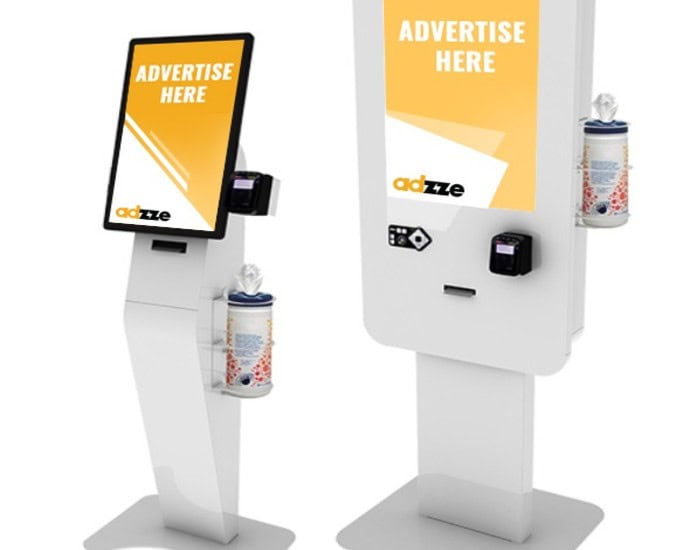As brands strive to meet consumer expectations for environmental responsibility, sustainable advertising practices have become more than just a trend—they’re a necessity. In a world increasingly focused on reducing environmental impact, digital display advertising can either contribute to the problem or become part of the solution. By embracing sustainable practices, brands can enhance their reputation, meet eco-conscious consumer demands, and reduce their carbon footprint, all while maintaining impactful advertising campaigns.
This guide will explore sustainable practices in digital display advertising, covering eco-friendly materials, energy-saving technology, and responsible content practices. We’ll also discuss how advertisers can make strategic decisions that prioritize sustainability while keeping brand visibility high. For marketing professionals looking to align their brand with environmental values, implementing sustainable advertising is an essential step forward.
Why Sustainability Matters in Digital Display Advertising?
Sustainability in advertising is more than a buzzword; it’s a significant factor for consumers and businesses alike. Research shows that over 60% of global consumers prefer to purchase from brands committed to positive social and environmental impact. As more companies recognize this shift, incorporating sustainable practices in digital display advertising becomes a valuable differentiator, setting forward-thinking brands apart from their competitors.

Beyond consumer preference, sustainable advertising practices are crucial for reducing environmental harm. Digital displays, especially those placed outdoors or in high-traffic areas, consume considerable energy and can produce substantial waste if not managed responsibly. By focusing on sustainability, brands can reduce this impact, helping to preserve resources while maintaining effective marketing campaigns.
Sustainable Practices in Digital Display Advertising
Energy-Efficient Technology for Digital Displays
A major component of sustainable advertising is reducing energy consumption. Many digital displays operate around the clock, consuming significant amounts of power. Brands can cut down on energy usage by investing in energy-efficient LED screens, solar-powered displays, or smart displays that adjust brightness based on ambient light. For instance, screens that automatically dim during the night or when not in use conserve energy and reduce costs.
Some brands are also experimenting with solar-powered digital displays, especially in outdoor spaces. These displays harness sunlight during the day to power screens and lighting, reducing dependency on the grid and lowering overall energy consumption. Incorporating energy-efficient technology in digital displays not only contributes to sustainability but also reinforces the brand’s commitment to environmental responsibility.
Eco-Friendly Materials and Manufacturing Processes
Sustainable digital displays also involve eco-friendly materials in their construction. Traditional screens and signage often contain plastic, metals, and other materials that contribute to pollution. By opting for screens made from recycled or biodegradable materials, brands can significantly reduce waste.
Additionally, working with manufacturers that prioritize sustainable practices in their production processes—such as reducing emissions and recycling waste—adds another layer of responsibility. From recycled steel frames to LED bulbs with longer lifespans, each eco-friendly material and practice contributes to a more sustainable advertising approach.
Content Management for Reduced Energy Use
Content strategy also plays a role in sustainable digital display advertising. By managing the frequency and type of content displayed, brands can reduce the power demands of their screens. For example, static images or ads consume less energy than high-motion video content, as they require less processing power to display.
Similarly, scheduling ads to run only during peak hours or using motion sensors to activate screens only when viewers are nearby can reduce energy consumption. Implementing smart content management strategies ensures that brands maintain visibility without unnecessary energy use, making digital display advertising more sustainable and cost-effective.
The Role of Programmatic Advertising in Sustainable Display
Programmatic advertising can help make digital displays more sustainable by optimizing ad placement and reducing unnecessary display time. Using real-time data, programmatic systems can allocate ads only when there is likely to be an audience, minimizing wasteful screen time. For instance, in shopping malls, ads might only display during peak hours, saving energy when foot traffic is low.
Programmatic also allows for greater precision in targeting, which ensures that brands are only showing ads to relevant audiences. This focus reduces wasted resources and ensures that the ads are both effective and environmentally conscious.
Measuring the Impact of Sustainable Digital Display Advertising
For marketing professionals, measuring the impact of sustainable advertising is essential. Metrics can include both the effectiveness of the campaign and the environmental benefits of the sustainable practices used.
Track Energy Savings and Emissions Reduction
Many energy-efficient and solar-powered displays allow for tracking energy consumption. By measuring how much energy a campaign saves compared to traditional methods, brands can quantify their environmental impact. These metrics can be shared with audiences as part of sustainability reports or even included in future ad campaigns.
Analyze Engagement Rates with Target Audiences
Sustainable practices in advertising can also impact brand perception and engagement. By tracking engagement rates with eco-friendly digital displays, brands can gain insights into how their target audience responds to environmentally conscious campaigns. Increased engagement may indicate that audiences are more receptive to brands that align with their values.
Calculate Cost Savings
Sustainable advertising isn’t just about reducing environmental impact—it can also reduce costs. Brands can calculate the cost savings associated with energy-efficient digital displays, lower material costs from recycled options, and reduced operational expenses from programmatic ad scheduling. These savings can then be reinvested into other sustainable initiatives.
Conclusion
Sustainable practices in digital display advertising aren’t just good for the environment—they’re smart for business. For brands aiming to connect with eco-conscious consumers, adopting energy-efficient technology, using eco-friendly materials, and optimizing content management are powerful steps toward responsible advertising. Placing advertisements on golf courses and other natural spaces with sustainable displays reinforces a brand’s commitment to environmental values, fostering stronger connections with audiences.
In today’s market, where consumers are more aware than ever of their environmental impact, sustainable advertising can differentiate a brand and build loyalty. Ready to implement sustainable practices in your next digital display campaign? Contact us today to discover eco-friendly strategies tailored to your brand’s unique goals and audience.






